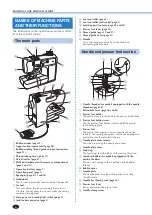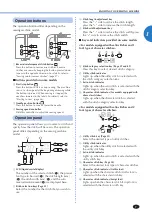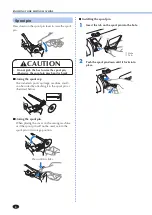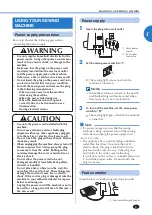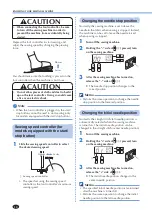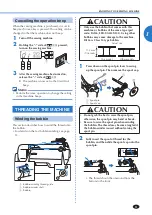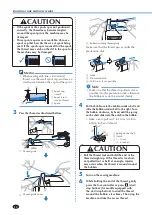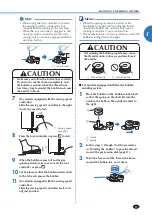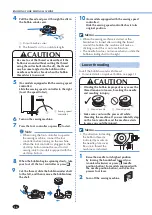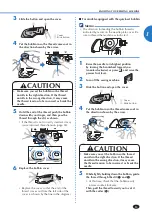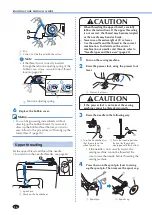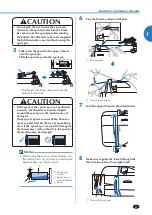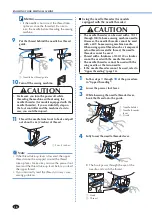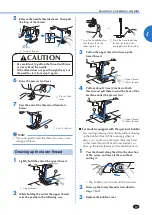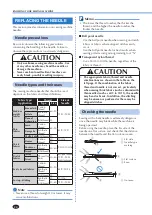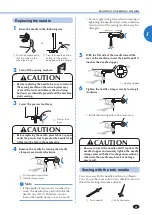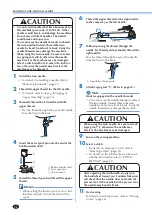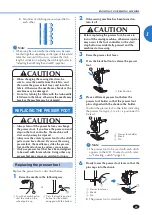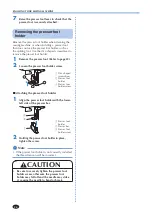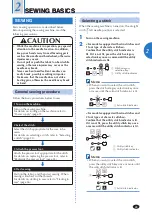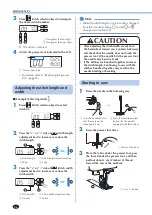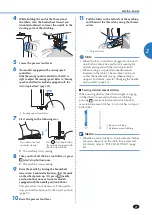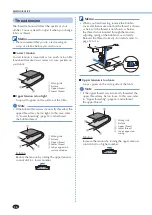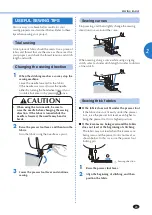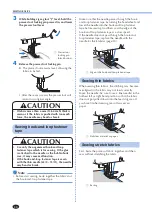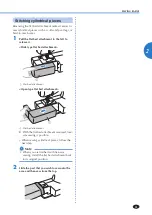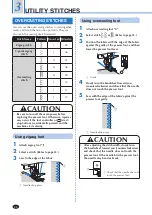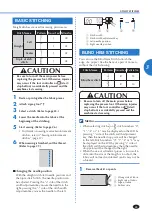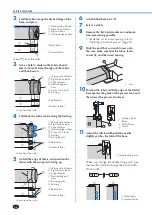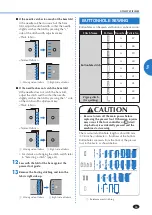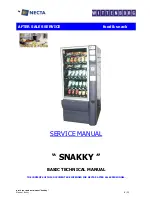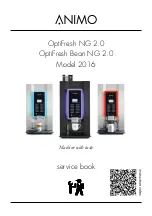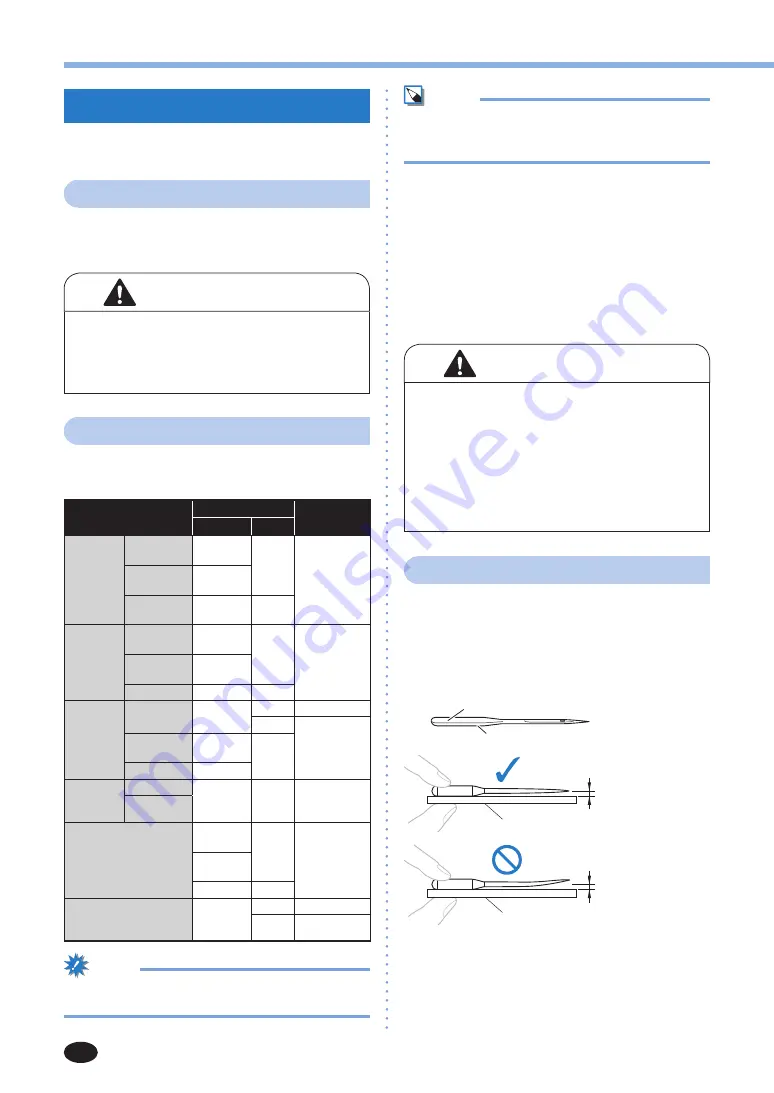
KNOWING YOUR SEWING MACHINE
20
REPLACING THE NEEDLE
This section provides information on sewing machine
needles.
Needle precautions
Be sure to observe the following precautions
concerning the handling of the needle. Failure to
observe these precautions is extremely dangerous.
CAUTION
• Only use home sewing machine needles. Use
of any other needle may bend the needle or
damage the machine.
• Never use bent needles. Bent needles can
easily break, possibly resulting in injury.
Needle types and their uses
The sewing machine needle that should be used
depends on the fabric and thread thickness.
Fabric Type/
Application
Thread
Size of
Needle
Type
Size
Medium
weight
fabrics
Broadcloth Cotton
thread
60–90
75/11–90/14
Taffeta
Synthetic
thread
Flannel,
Gabardine Silk thread 50
Thin
fabrics
Lawn
Cotton
thread
60–90
65/9–75/11
Georgette
Synthetic
thread
Challis, Satin Silk thread 50
Thick
fabrics
Denim
Cotton
thread
30
100/16
50
90/14–100/16
Corduroy
Synthetic
thread
50–60
Tweed
Silk thread
Stretch
fabrics
Jersey
Thread for
knits
50–60
Ball point needle
75/11–90/14
(gold colored)
Tricot
Easily frayed fabrics
Cotton
thread
50–90
65/9–90/14
Synthetic
thread
Silk thread 50
For top-stitching
Synthetic
thread
Silk thread
30
100/16
50–60 75/11–90/14
Note
• Never use a thread of weight 20 or lower. It may
cause malfunctions.
Memo
• The lower the thread number, the thicker the
thread; and the higher the needle number, the
thicker the needle.
■
Ball point needle
Use the ball point needle when sewing on stretch
fabrics or fabrics where skipped stitches easily
occur.
Use the ball point needle for best results when
sewing patterns using monogramming foot “N”.
■
Transparent nylon thread
Use a 90/14 to 100/16 needle, regardless of the
fabric or thread.
CAUTION
• The appropriate fabric, thread and needle
combinations are shown in the table on the
left page. If the combination of the fabric,
thread and needle is not correct, particularly
when sewing thick fabrics (such as denim) with
thin needles (such as 65/9 to 75/11), the needle
may bend or break. In addition, the stitching
may be uneven or puckered or there may be
skipped stitches.
Checking the needle
Sewing with a bent needle is extremely dangerous
since the needle may break while the machine is
being operated.
Before using the needle, place the flat side of the
needle on a flat surface and check that the distance
between the needle and the flat surface is even.
1
2
1
Flat side
2
Needle type
marking
3
4
3
Flat surface
4
Even
3
5
5
Not even

